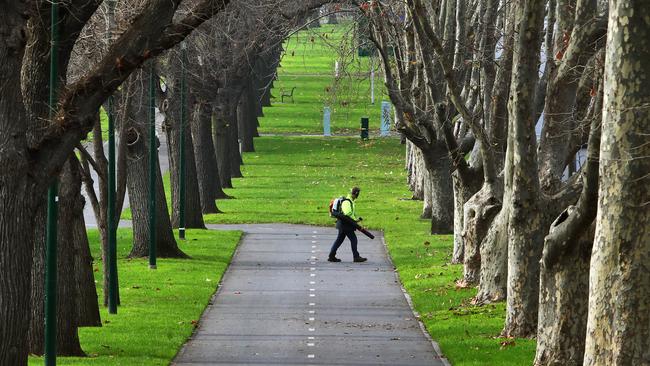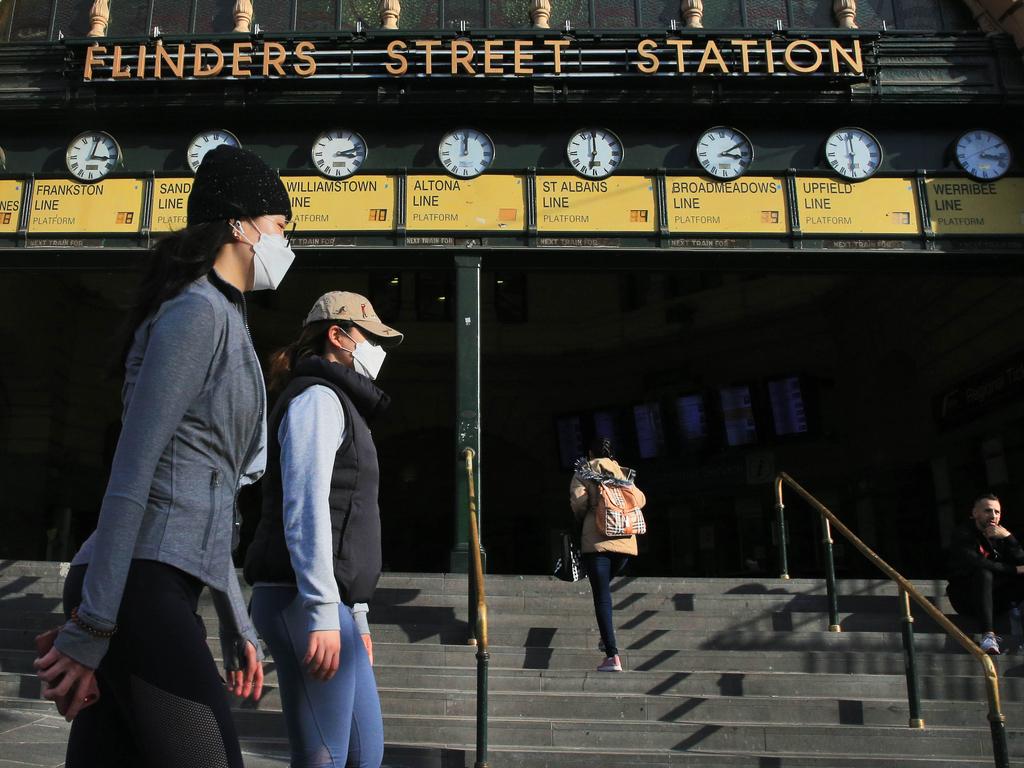
In a week when the Nasdaq index hit a record high and China’s sharemarket hit a 2½-year high, Australia’s sharemarket had its worst five-day run in a month as the second wave of coronavirus in Melbourne prompted a closure of the NSW and Victorian border and a lockdown of Melbourne.
Even after the Nasdaq had its best day in seven weeks last Monday — boosting the S&P 500 to its best level in four weeks — Australia’s S&P/ASX 200 continued to slip as Victoria outlined a stage-3 lockdown of Melbourne for at least the next six weeks.
US stocks climbed on Friday, ending the week with gains, as investors brushed off worries about a fresh wave of coronavirus infections and its impact on the economic recovery.
The Dow Jones Industrial Average advanced 1.4 per cent. The S&P 500 rose 1 per cent and the Nasdaq Composite climbed 0.7 per cent to afresh record for the technology-heavy index.
All three indexes were positive for the second consecutive week, even as new coronavirus cases in the US repeatedly hit fresh records.
The surge on Wall Street has given a positive bent for Australian shares with futures markets pricing in a 1.4 per cent gain on opening, even as Victoria on Sunday recorded 273 new cases of coronavirus.
A relatively positive Reserve Bank assessment of the recent past was offset by a cautious view on where the economy is going, and while officials estimated Melbourne’s lockdown would cost $1bn a week, private sector economists said it could be much more, particularly after indirect effects.
Westpac chief economist Bill Evans has revised down his estimate of September quarter growth to 1.1 per cent from 1.5 per cent previously given the lockdown across Melbourne.
“While about 75 per cent of the economy will still grow by 1.5 per cent in the September quarter, 25 per cent will stall,” Mr Evans said.
But the “unknown variable” is the impact on national confidence of the Victorian virus spike, Mr Evans said. Key to this will be the release of Westpac-MI Consumer Sentiment Index on Wednesday.
Also to be closely watched is employment numbers with economists tipping the unemployment rate shifting to 7.1 per cent in June from 6.4 per cent in May.
By the end of the week, the S&P/ASX 200 had fallen 2.3 per cent to 5919.2 points, making it the worst week in four. If not for a late bounce off a seven-day low of 5899.5 on Friday it would have been the worst week for Australian shares in almost three months.
Melbourne-exposed stocks were among the worst performers this week, with Domain down 13 per cent, Chadstone part-owner Vicinity Centres down 9 per cent and Crown Resorts down 7.7 per cent. Meanwhile Qantas and Sydney Airport each fell about 8 per cent and the major banks, apart from CBA, lost almost 5 per cent.
Gold and iron ore miners surged along with tech stocks, with St Barbara up 10 per cent, Fortescue Metals up 5.9 per cent and Afterpay up 7 per cent even after a capital raising.
Friday’s ASX 200 fall came as China moved to take some heat out of its $13.8 trillion sharemarket.
Investors are bracing for the start of US earnings season, with Citi, JPMorgan and Wells Fargo due to report on Tuesday, amid reports that Wells is looking to let go thousands of workers.
Goldman Sachs reports on Wednesday, while BofA, Morgan Stanley and Netflix are out on Thursday.
In terms of the outlook for the US sharemarket – which is always crucial for the Australian market — it’s worth noting that the CBOE VIX volatility index bounced off its 200-day moving average near 26 per cent for the second time in a week, forming a bullish (bearish for stocks) key reversal pattern.
Credit Suisse’s highly-regarded macro strategist, Damien Boey, has told clients for some time that, based on his model they should not “fight the Fed” while the VIX is above 27 per cent, but “fight the Fed” when the VIX is below that point — a key output from his model of future volatility.
At the same time, Citi’s chief US equity strategist, Tobias Levkovich, who has consistently fought the rally in recent weeks, raised his S&P 500 year-end target to 2900 from 2700, because of “the Fed’s aggressive policy to support markets”.
“While our fundamental assessment still implies downside from current levels, it is more probable that the trading range for the market should be 2700-3200 given powerful fiscal and monetary stimuli, with more likely from government next month,” Mr Levkovich said.
“We envision volatility for equities as good news is priced in and problems are being overlooked.”
But on Friday, JPMorgan’s head of macro quantitative research, Marko Kalonovic, said he was “staying pro-risk” and “adding back to overweight”.
“We retain a pro-risk allocation in our model portfolio, given the cheap relative valuation of equities, policy support, light investor positioning, and strong rebound in growth which is unlikely to be stymied by new COVID-19-related lockdown,” he said.
Investors should also take a good note that BlackRock — the world’s biggest fund manager (and one that’s now uniquely and intimately involved in the conduct of the Fed’s unprecedented bond buying program) — cut its view on US equities on Tuesday to “neutral” on a “tactical basis”.
“We see a surge in COVID-19 cases in the US potentially slowing the activity restart at a time when fiscal stimulus is at risk of waning,” said BlackRock’s global chief investment strategist, Mike Pyle.
“Yet the quality bias of the US market lends some support and keeps us from turning negative.”







Soaring coronavirus cases in Victoria and the US are a brutal reminder of the COVID-19 crisis. But markets are learning how to live with the pandemic.